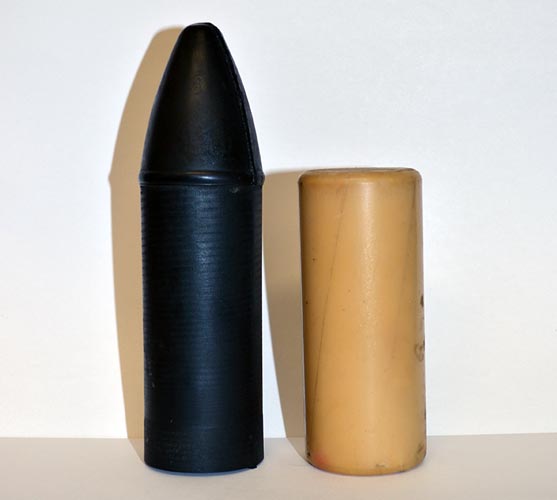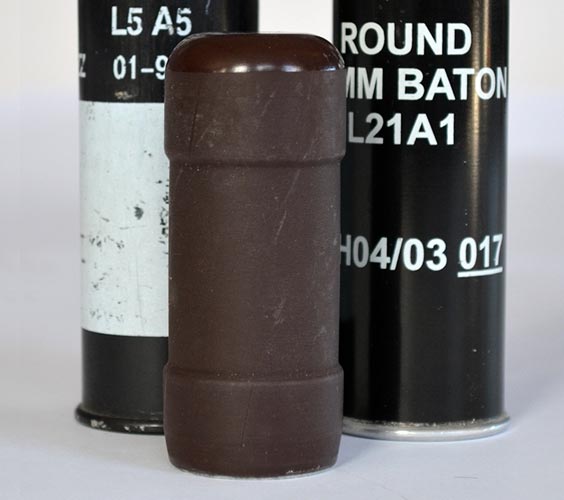Description
Examples of plastic and rubber baton rounds used by the security forces. On 1 March 1981, Maze prisoner Bobby Sands began his hunger strike. Sands led the campaign for the restoration of political status for Republican prisoners. He organised a hunger strike with a staggered start for each striking prisoner in order to maintain pressure on the government for a longer period of time. The strike heightened political tensions across the province. On 5th May, Bobby Sands died and was the first of 10 hunger strikers to die.
After each hunger strike death, violent riots erupted in Nationalist areas. The RUC was attacked with petrol, nail and acid bombs and deployed their new public order strategy, using Hotspur Land Rovers and plastic baton rounds to keep riots fluid and avoid standing confrontations. Plastic baton rounds were hard PVC cylinders fired with a muzzle velocity of 160mph from a Federal riot gun. The RUC used short range rounds that were designed to be aimed at the lower part of rioters’ bodies.
The hunger strike ended on 3 October, leaving 15 RUC, 15 soldiers and 37 civilians dead and 700 injured. During the protests, 29,601 plastic baton rounds were fired resulting in 203 people needing hospital treatment and seven deaths. Belfast surgeons called for changes to be made to plastic bullets. Although designed as a safer alternative to rubber bullets, plastic baton rounds were deadlier causing one death per 4,000 as compared to one death per 18,500 rubber bullets fired. In 1984, the European Parliament called for a ban on the use of plastic bullets, however as no viable alternative solution was found technical modifications were made to reduce the risk of casualties.
Links
- Related objects > 'Disband the RUC' poster
- Related objects > 'Ulster Says No' poster
- BBC History: Republican hunger strikes in Maze Prison
- CAIN Events: Hunger strikes
- Magnum Photos: The hunger strikes
- CAIN: List of people killed by 'rubber' and 'plastic' bullets
- BBC News: NI state papers - Concern over use of plastic bullets
- New Statesman: Using plastic bullets and water cannon in Northern Ireland
- Emergency Medicine Journal: Plastic baton round injuries
- IWM: Anti-riot baton round



